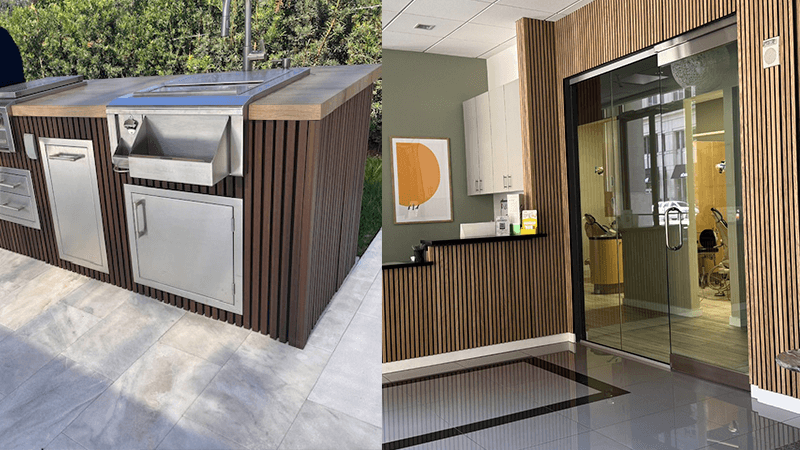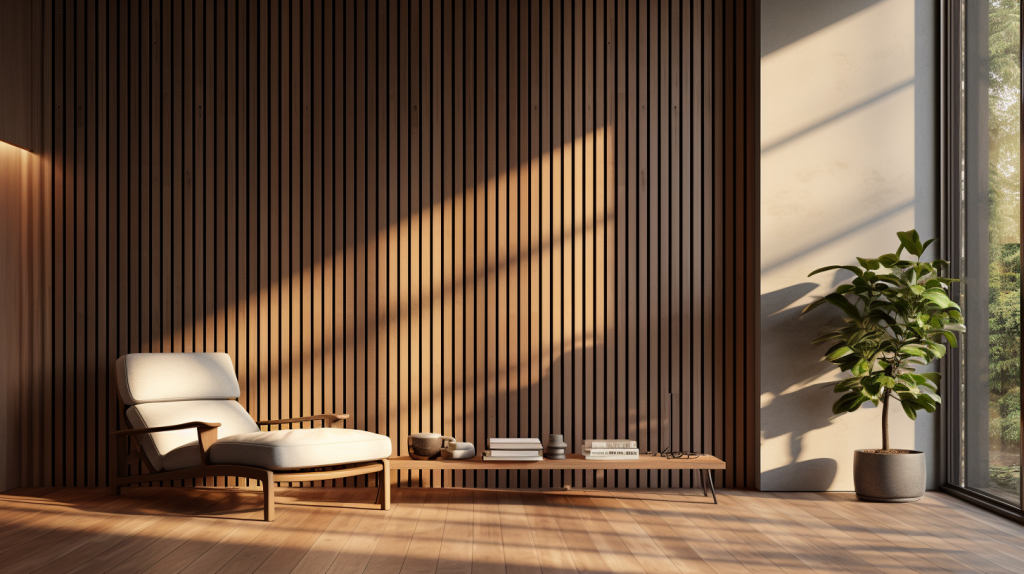Wood Paneling and Color: Pairing Paint, Metal, and Stone with Wood’s Natural Tones
Wood paneling is often the foundation of a space’s character. It has presence, warmth, and texture. But what surrounds it, like the wall color, the fixtures, the materials, shape how that character is expressed. Matching everything perfectly may feel safe, but it rarely brings out the best in a room. Contrast, when done intentionally, allows each element to breathe.
This guide walks through how to build around wood paneling using color, stone, and metal, with the goal of creating spaces that feel layered, balanced, and true to your vision.
Start with Tone and Temperature
Every wood tone leans warm, cool, or neutral. Recognizing this is the first step in knowing how to support it.
Walnut wood paneling, for instance, has deep, warm undertones that read rich and earthy. Grey oak wood panels are cooler, with a driftwood-like subtlety. Natural oak usually sits somewhere in the middle. When you know the temperature of your wood, you can start choosing complementary elements that reinforce or balance the tone.
Hold your samples in both daylight and artificial light. A wood that looks golden in the morning may shift to amber or even greenish under warm bulbs. Make decisions based on how the wood will actually live in your space.
Let Paint Frame, Not Compete
Paint can set the stage for your wood panels or fight them. The goal isn’t to match, but to harmonize.
Warm woods pair well with muted greens, soft creams, rich terracottas, and earthy browns. These tones echo what already exists in the wood grain. Cooler woods work best with greys, deep blues, and washed-out charcoals. For light, natural woods, consider tones drawn from nature, such as sage, sand, pale clay, or warm whites.
When in doubt, avoid pure white. It tends to make wood look either too orange or too dull. Instead, find a white or neutral with a matching undertone. A creamy off-white next to walnut, for example, reads thoughtful and warm.
Choose Stone and Tile That Add Quiet Movement
Wood already brings texture and pattern. If you’re adding stone or tile to the same space, look for surfaces that bring balance rather than competition. For wood with strong, expressive grain (like walnut or fluted panels), simpler stones such as limestone, honed travertine, or subtle quartzite, can create a calm counterpoint.
If your paneling is subtle, you can introduce more veining or color variation in your stone. The key is to keep the finishes compatible. Matte surfaces pair well with matte; polished with polished. It doesn’t have to match, it just has to feel cohesive.
Choose Metals That Support the Mood
Metal finishes affect how a room feels. They can bring warmth, edge, softness, or clarity. Warm woods generally respond well to brass, bronze, and matte black. Cooler tones tend to complement nickel, pewter, or brushed chrome.
Use metal intentionally in various applications such as in light fixtures, hardware, and accent furniture, then repeat it in small ways to create rhythm. Avoid mixing too many finishes in a small space. Two is usually enough.
Keep the Palette Tight and Intentional
Designing with contrast doesn’t mean using everything. Choose a dominant material (your wood paneling), then build a palette around it:
- One supporting neutral (paint or fabric)
- One contrast or accent color (tile, art, stone, or a bold textile)
- One metal finish
Limiting your materials allows each one to stand out. It also makes the room feel more resolved.
A good practice is to build a flat lay. Lay your wood sample next to your other materials—paint chips, stone, fabrics, metals. Move them around. Remove anything that feels forced. What’s left is usually what works.
Let the Wood Lead
Wood paneling already does a lot of work. It brings architecture and personality to a space. The goal isn’t to overpower it, but to let it anchor everything else.
When you build around your wood intentionally, the room starts to tell a clearer story. It doesn’t need to be loud. It just needs to feel like everything belongs there.
At Wood Panel Wall Miami, we work with people shaping homes, studios, shops, personal sanctuaries, and any space where materials matter and mood has meaning. If you’re ready to shape a space that feels as thoughtful as it looks, we’re here to help you bring that vision to life. Visit our showroom or give us a call. We’d love to be part of your next project.









